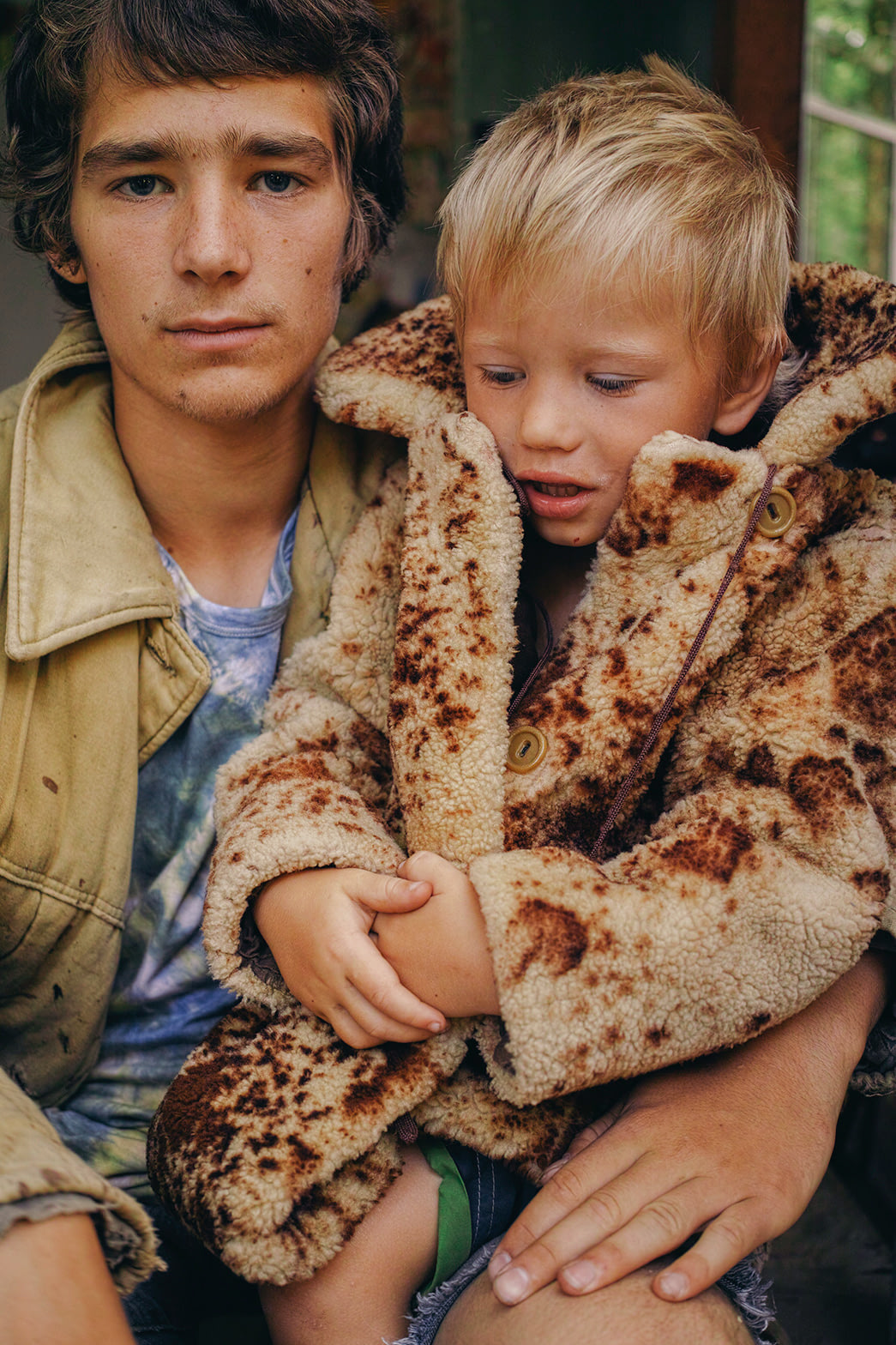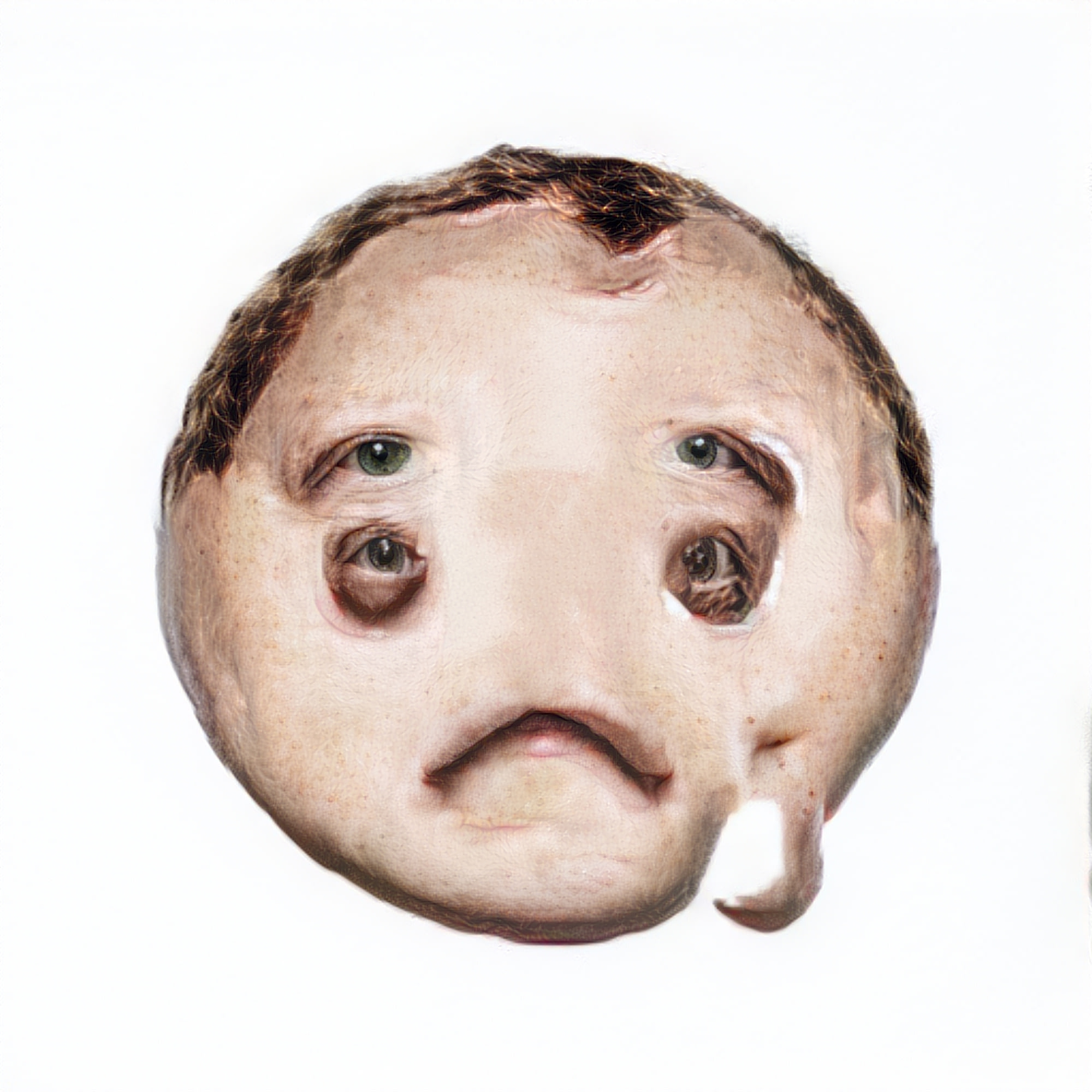
You’d think an emoji would be a clear and precise representation of an emotion. However the difference in rendering on different devices provides a great potential for miscommunication.
But even on the same platform, the kind of emotional reaction you may express is curated through the choice and design of available emojis. Take Facebook for example. The five Facebook emojis give you broad expressive capabilities, yet their design is very specific - and close to the extreme ends of the emotional scale. When using emojis, we wear these slightly too big masks of these particular, predefined facial expressions. We are becoming them.
I decided to reverse the process, to add body to the digital expression. That body should be, of course, that of Mark Zuckerberg.
Here are the results, created through disembodied neural networks.
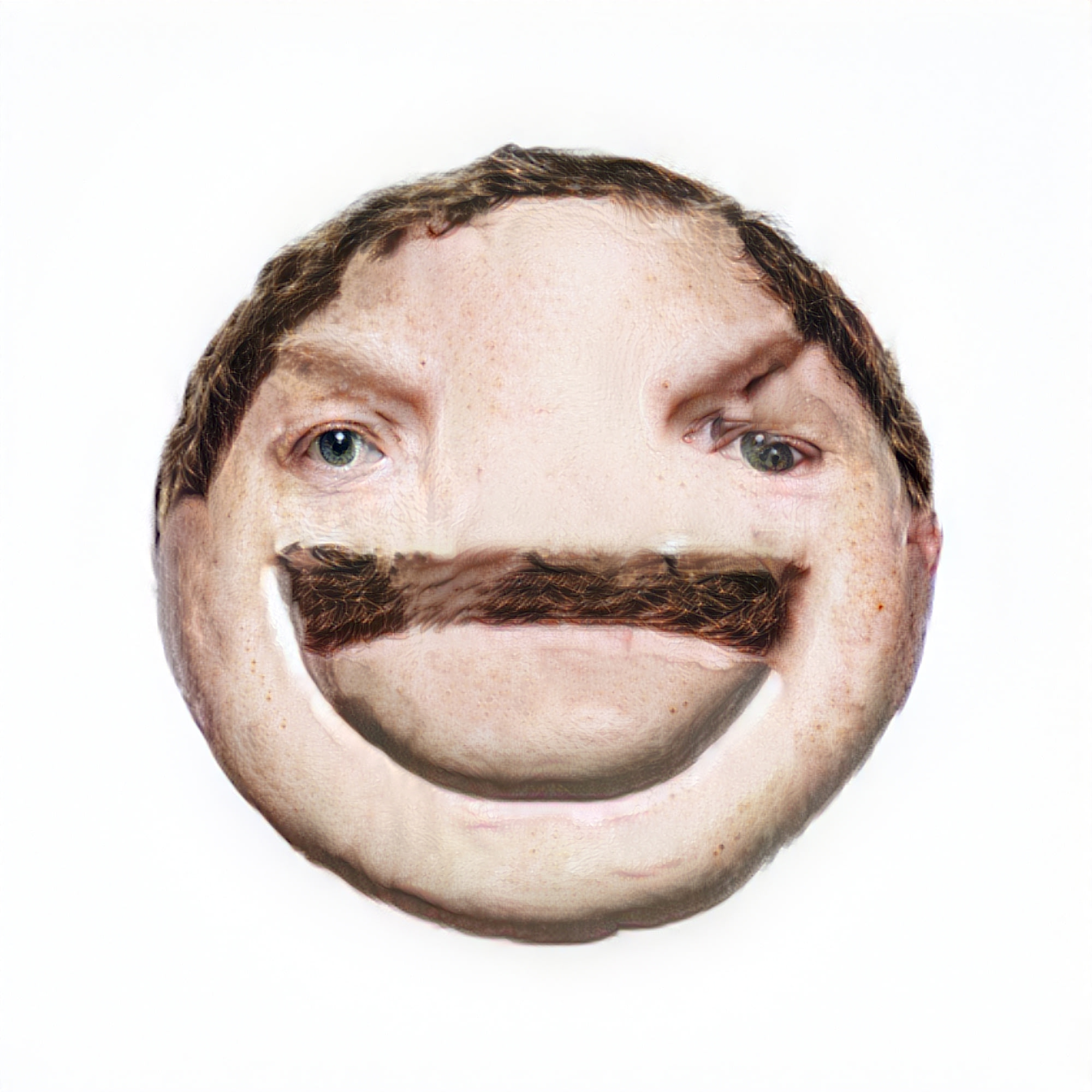
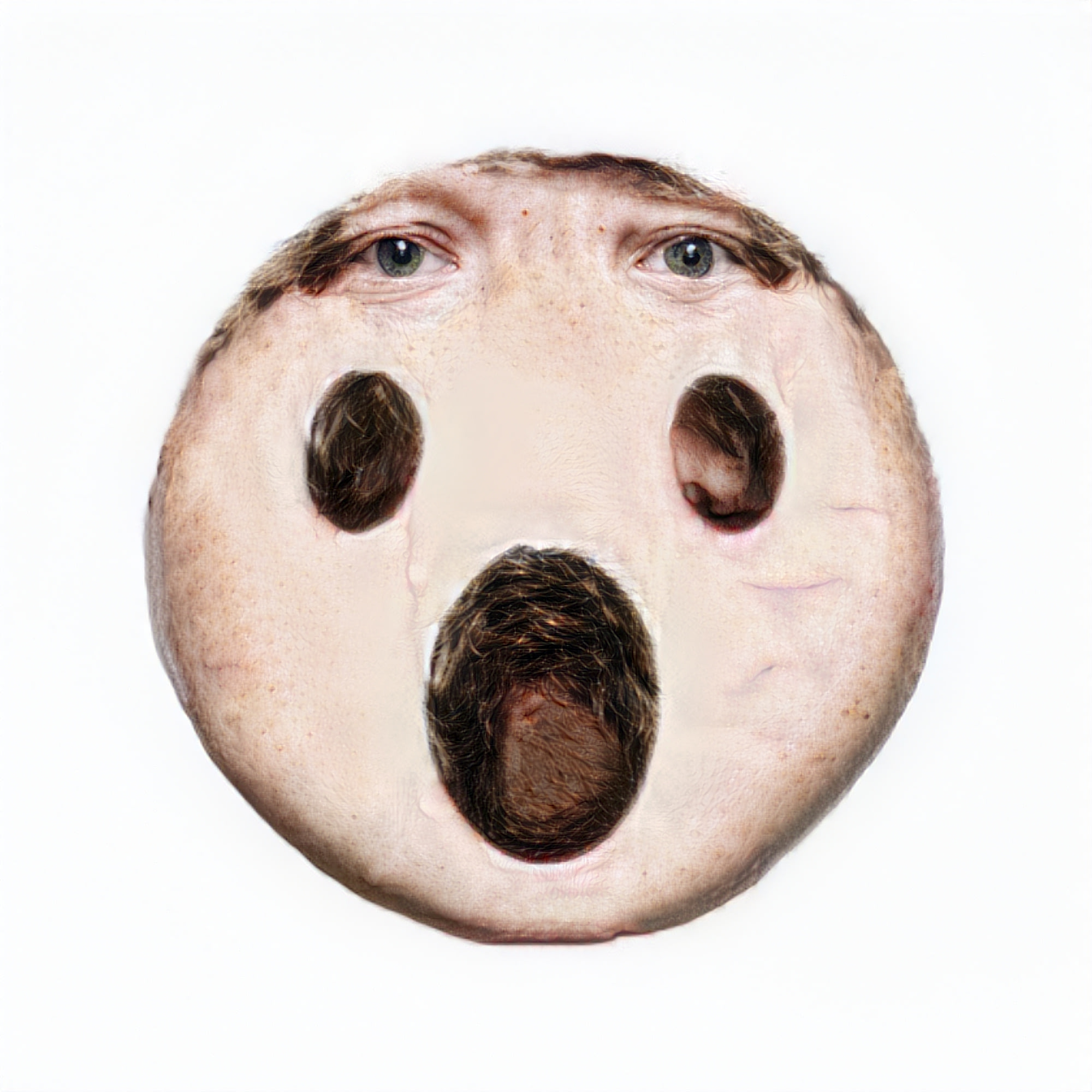
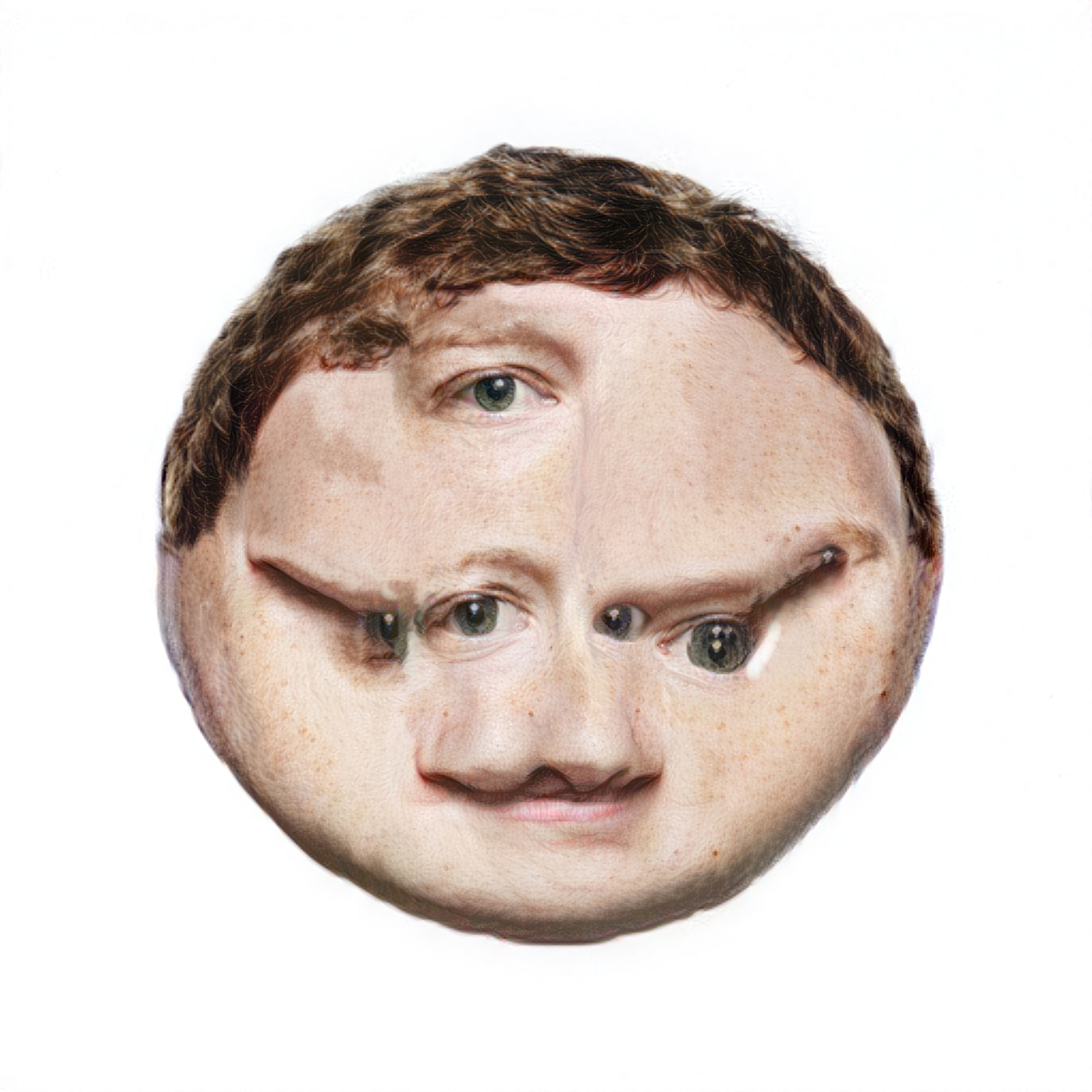
How it’s done:
First CNNMRF populated the emoticons with features of Marks face. It especially likes eyes and hair. I then used Deep-Image-Analogy to add more features, contrast, structure and adjust histogram. Finally jcjohnsons neural-style was used to upscale the image while adding texture.

Stickers for Telegram now available: https://t.me/addstickers/cursedmark.
Got a question? Just ask me.
Looking for ways to visualize machine learning processes. Neural nets are trained to recognized cancerous Ki-67 marked cells in biopsies. Instead of just counting the cells, a neural style process is run to produce infinite zombies in their place.
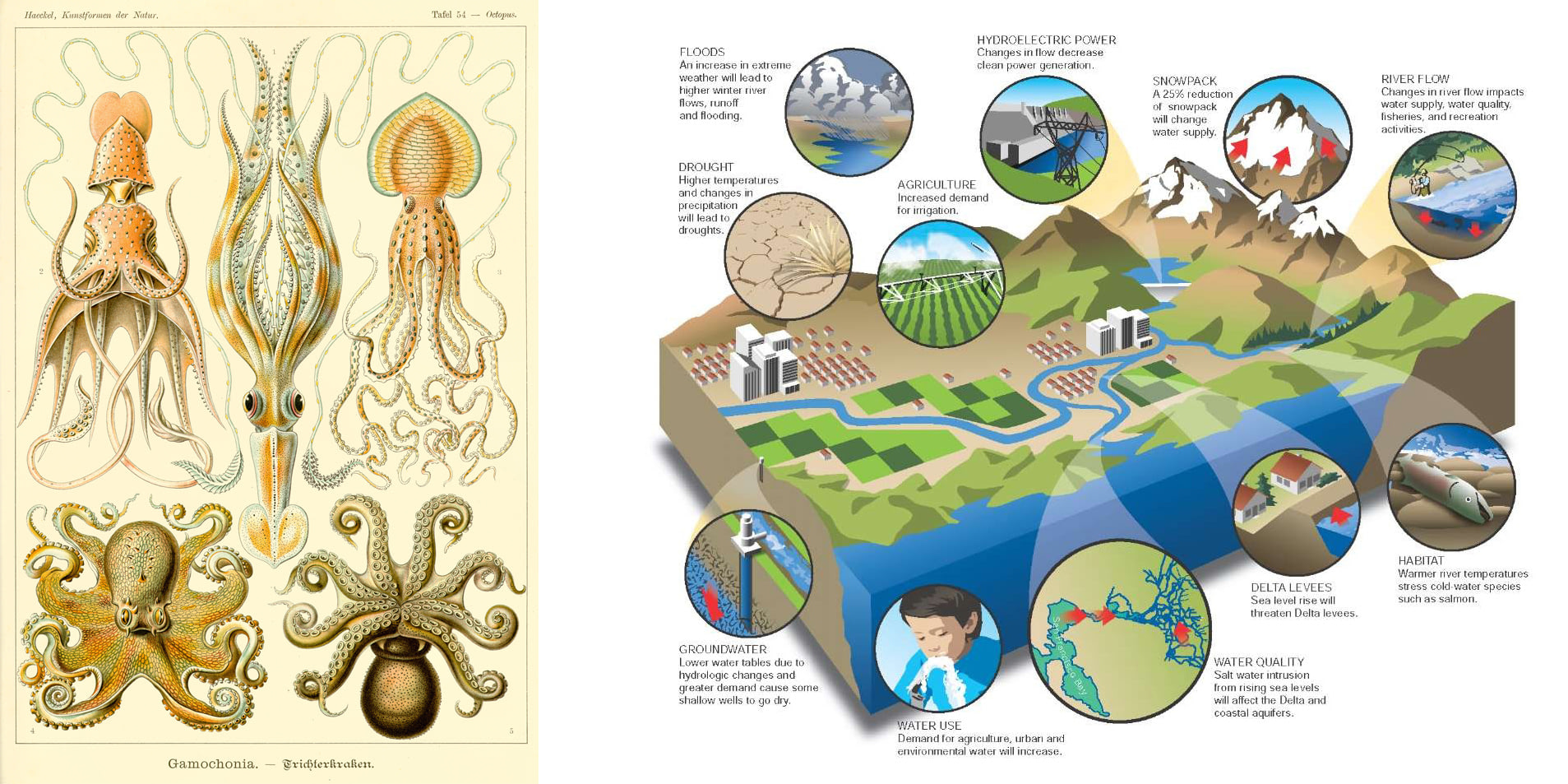
I was doing some research for an upcoming exhibition and looked into the question of tone in scientific communication, specifically the stylistic influence of visual representations of knowledge. Obviously the style changed over time, became more abstract, less naturalistic, less.. certain. As if the scientists became troubled by the idea of adding some character to the visual language - which is futile anyway: no matter what you do you end up with something that has character, just maybe a lame one. One particularly popular type of illustration in geosciences is the block diagram. While visually appealing, it often lacks any kind of a sensible way to embed processes that happen outside of the cut out piece of earth - the circulation of water, the circulation of life forms, human influence, changes over time - all that has to be added in some stupid way, with arrows and explanations.
Instead, I looked for ways to bring some of the old, more subjective ways to scientific illustrations. Add a few too many details. Make it alive, permeable for living creatures.
I took some illustrations by the 19th century German zoologist, philosopher and illustrator Ernst Haeckel, and used them as style for a neural style transfer algorithm.
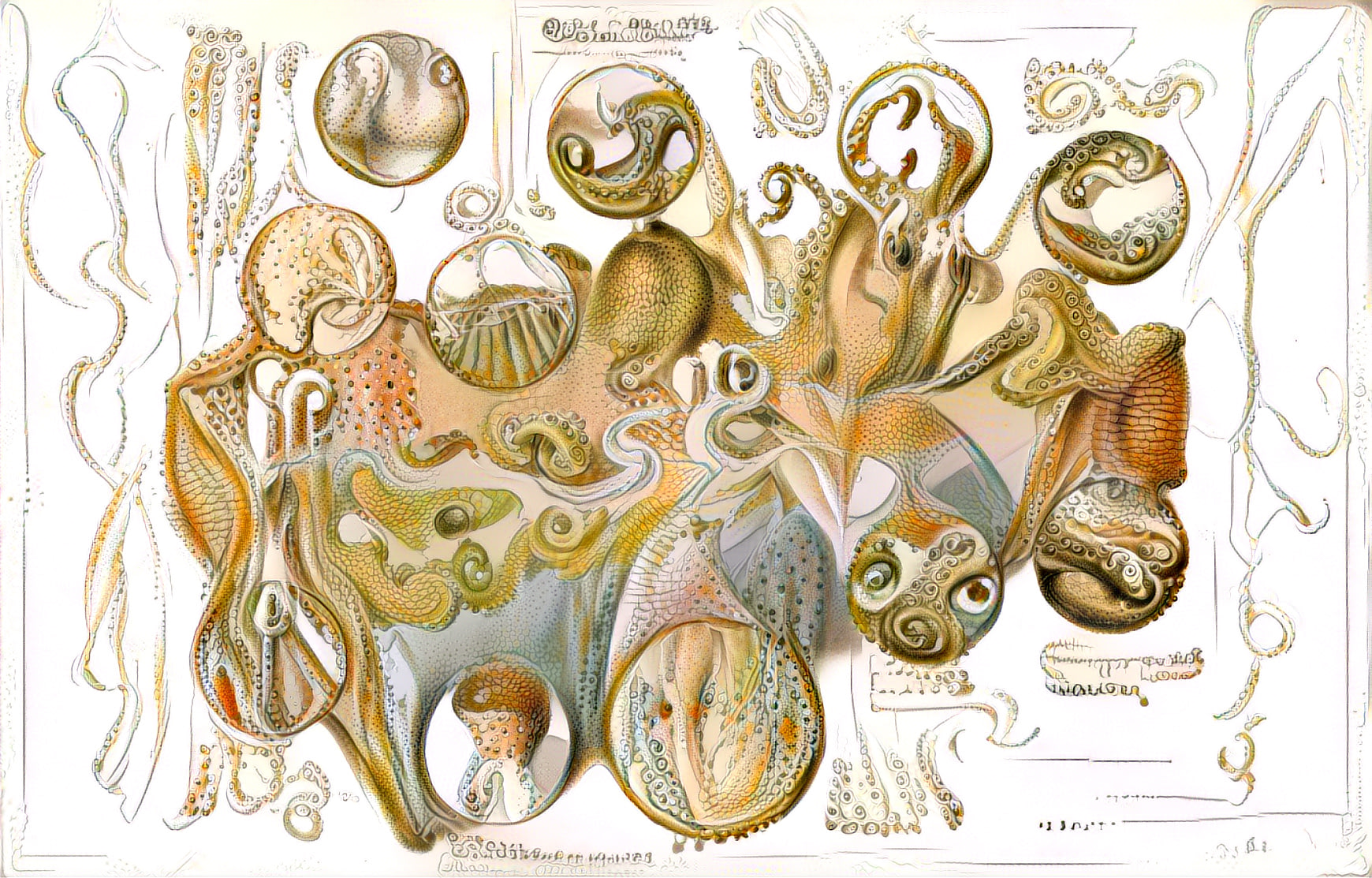
We are conditioned to look for meaning in scientific illustrations. While the meaning is lost through the process of neural style transfer, the illustration gains a lot of visual complexity. As viewers we may sense a deep cross-interlocking between the animal and its environment, but we do not get the chance to actually understand the specifics of their relationships.
Here are a few more:
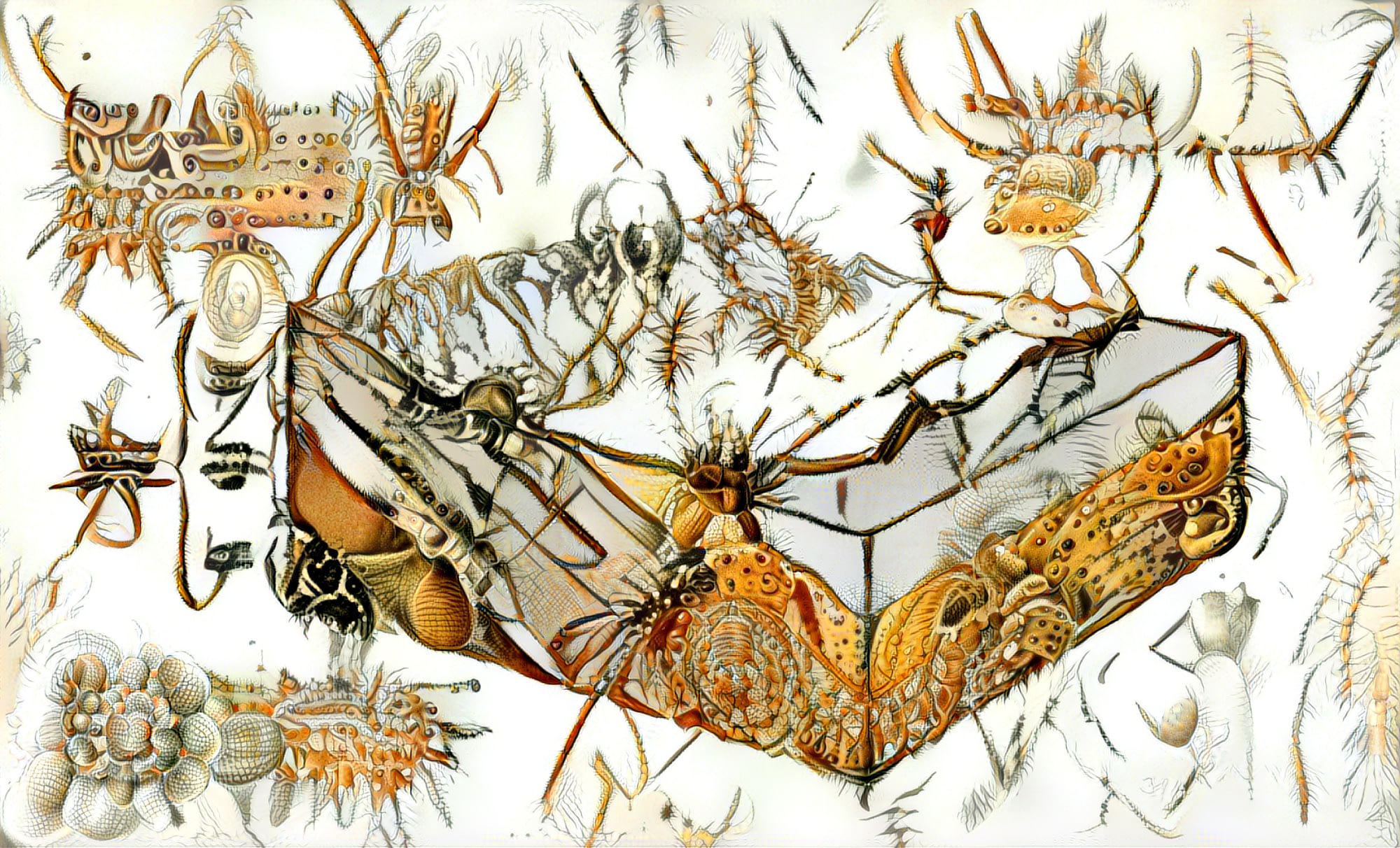
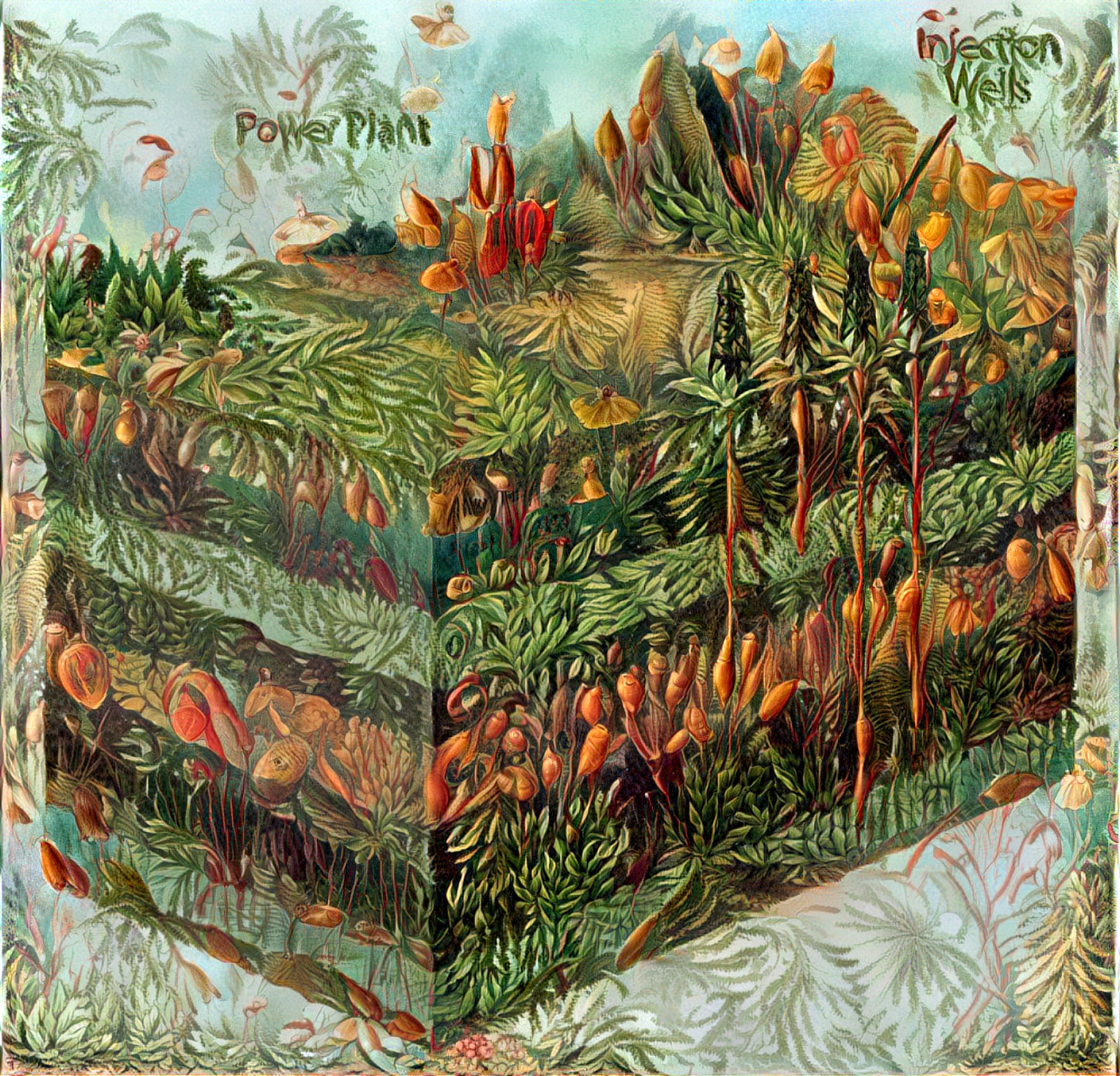
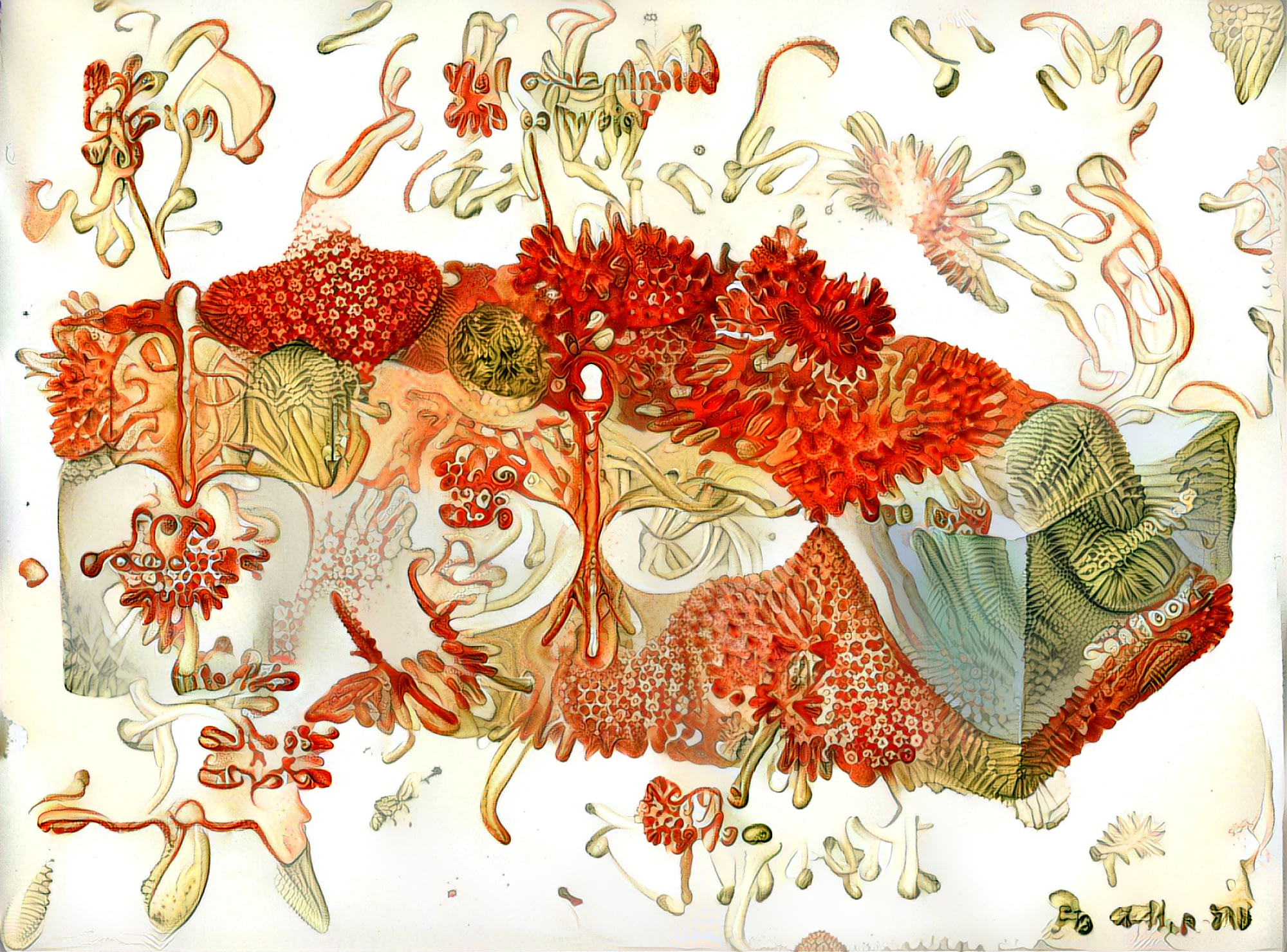
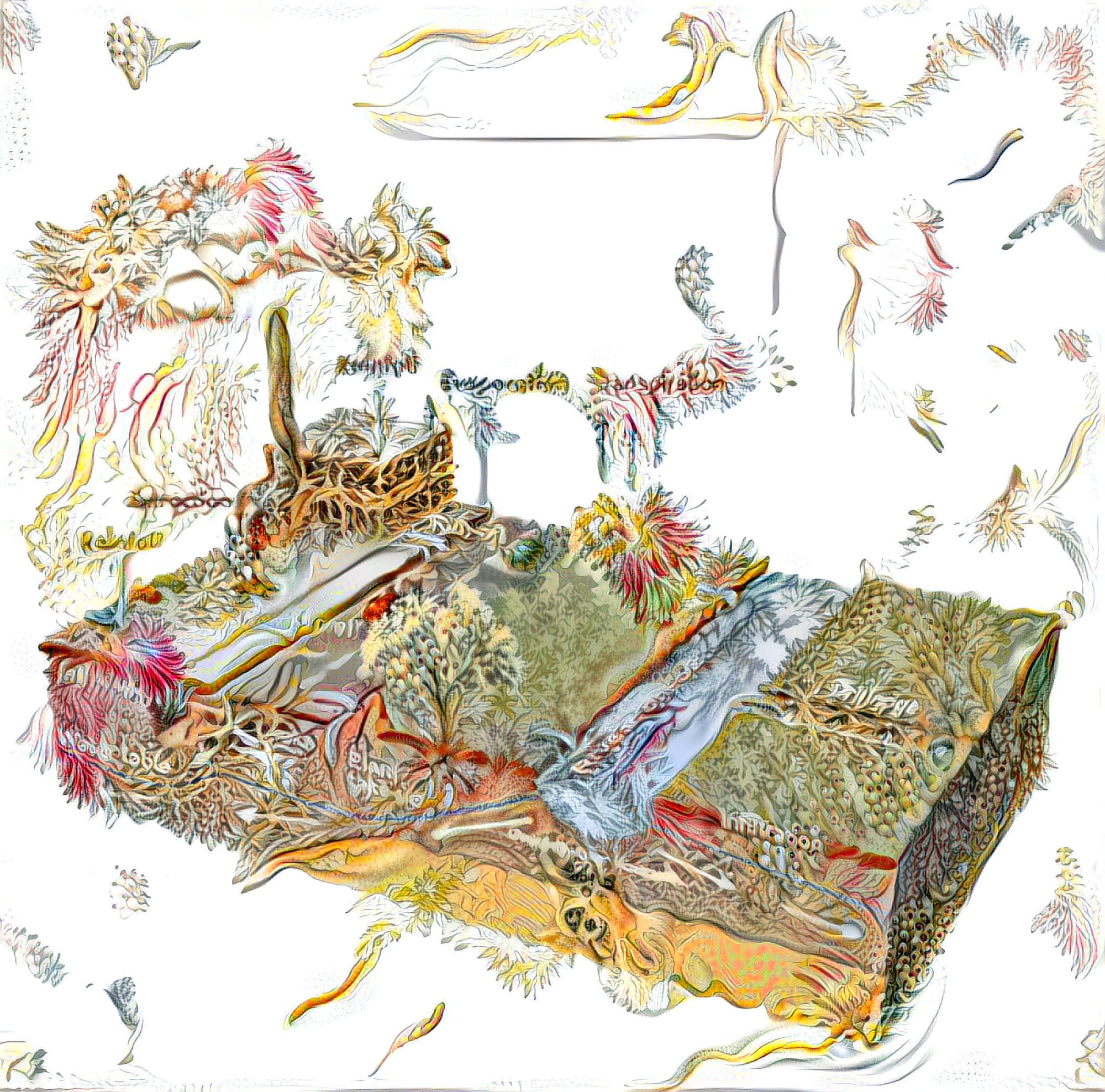
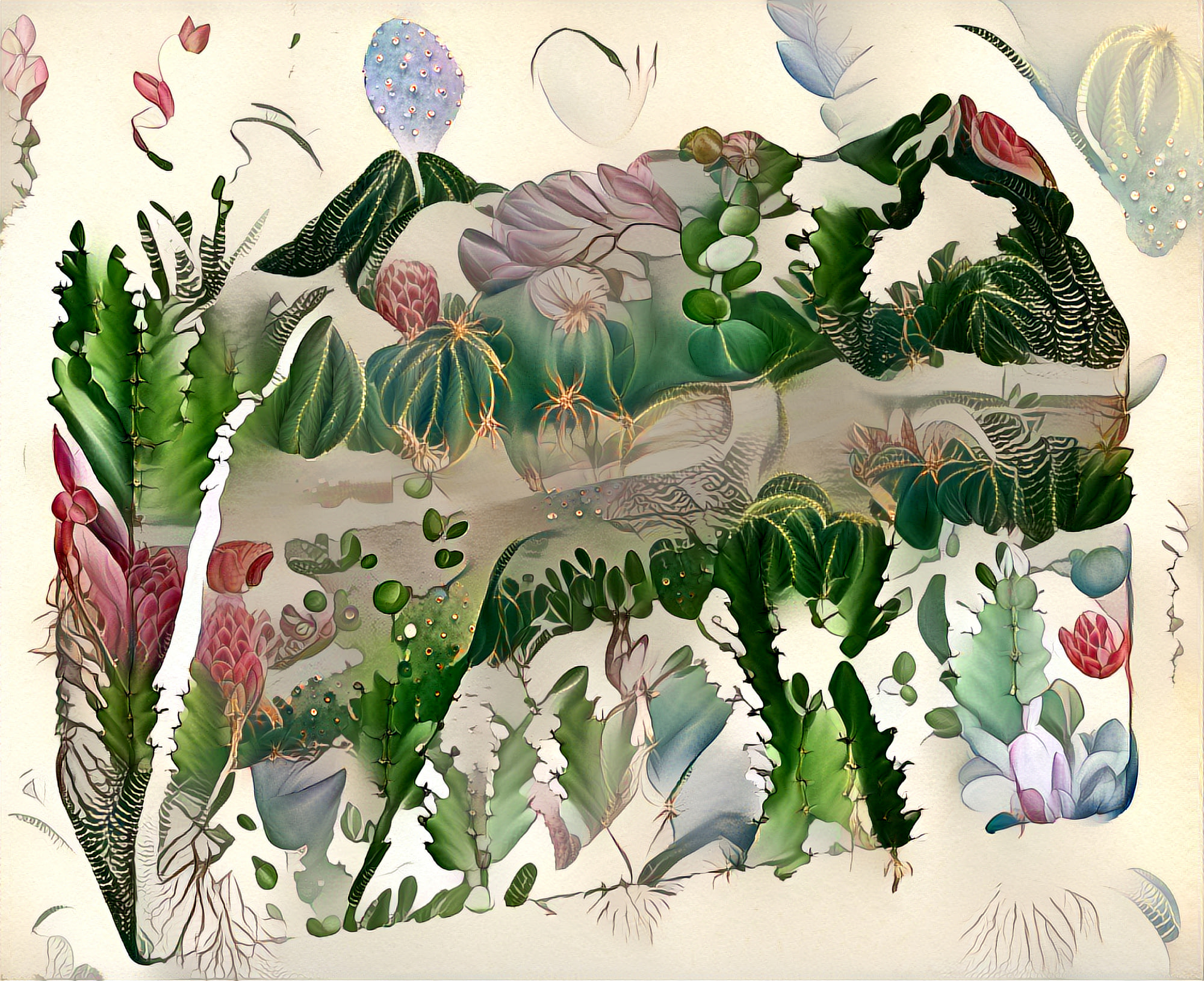
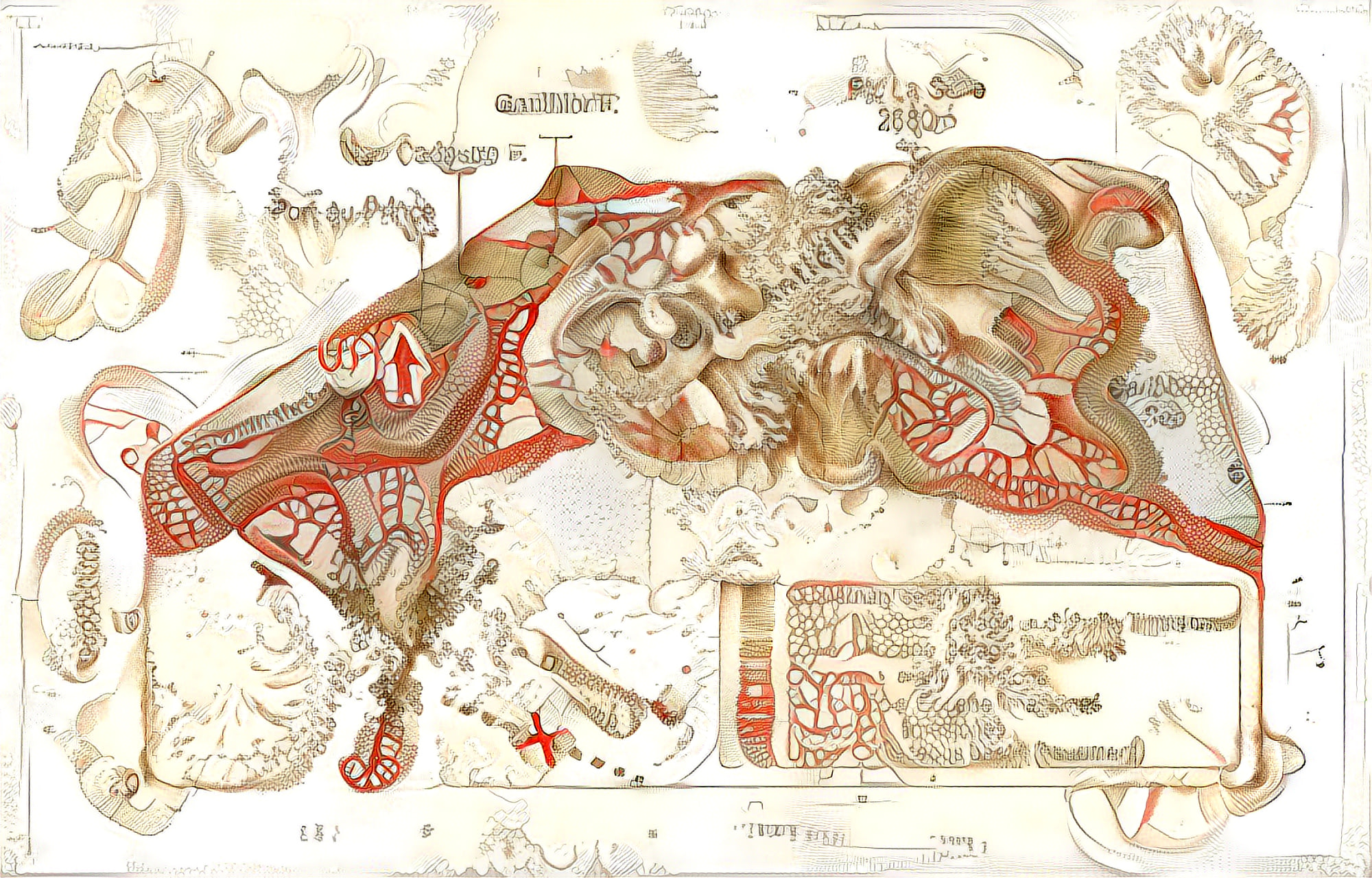
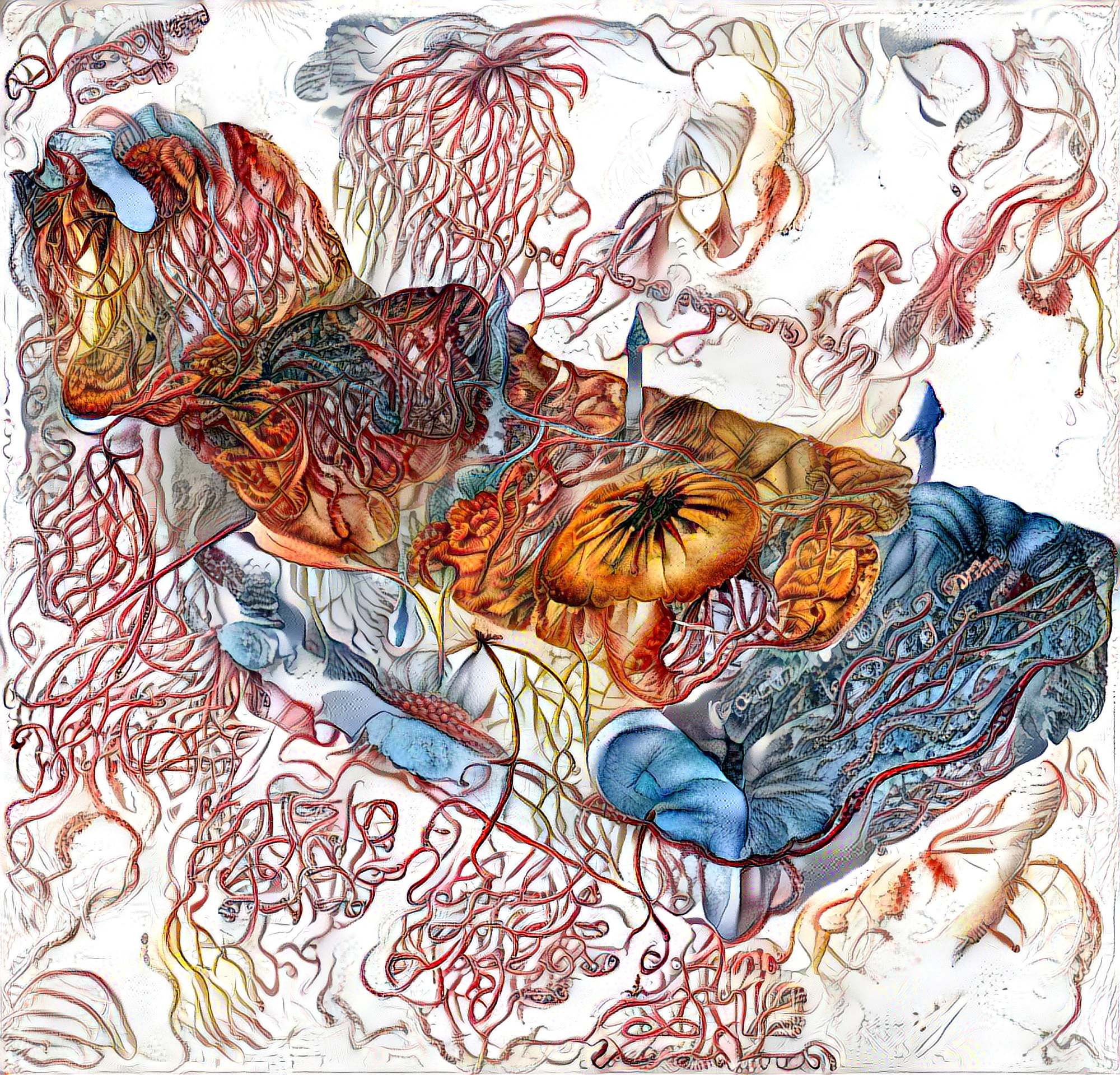
Because of the non-deterministic nature of neural style transfer, the results differ a little bit every time you run the script. Combining a dozen outputs creates an interesting effect. It’s not breathing nor movement but some kind of uncertainty that normally only comes when you freeze living matter in time. Like a collection of portrait photographs, neither of which is truly you.
How to do it yourself
Exposition is the process of arriving in a movie, arriving at the characters’ vantage point, arriving in their space.
I shot this short film with Mira and Matina in August 2015, and I really like it for its exposition through insignificance.
The film starts with unimportant movements, movements that carry no meaning, and since there’s no significance to be ‘understood’, the viewers search for meaning continues. It plays with the relationship of the protagonists without explaining, and in the end, when we arrived, when we are ready, when we are invested in the characters, it just ends.
Nobody actually wants to use a web browser. It becomes evident the second you open your browser and notice that you don’t have internet connection. What we like about browsers is what they offer on the other side. What they connect us to. In that sense, browsers are transitory spaces - similar to airports, planes and train stations. Most of us have lost our childish curiosity towards these spaces - we go there because we want to arrive somewhere else.
Arriving somewhere else with early browsers was quite one-dimensional - you clicked your way from one website to the next, in the same window. You surfed. You bookmarked the pages that you wanted to return to.
Later, as the web became richer, you sometimes had more than one browser window open. I vividly remember having seven Internet Explorer windows open, thinking to myself “this is way too much to keep track of!”.
Right now, my Firefox has 477 tabs open.
How could this happen?
Tabs are externalized cognition

“Certainly, it would be a global disaster for humanity; a disaster for the entire world,” Putin said, commenting on the nuclear doctrine, “as a citizen of Russia and the head of the Russian state I must ask myself: Why would we want a world without Russia?”
He proceeded to present the new ultrasonic missiles, capable of destroying a world without Russia. The animation then shows missiles go off in a world without Russia - or any other known country:
I fail to see any other interpretation except that they found worlds without Russia and proceded to destroy them, while filming the action from the orbit.
Between this speculative topology of a Russia-less world and our current planet, only one overlap exists: Florida.

Pray for Florida.

